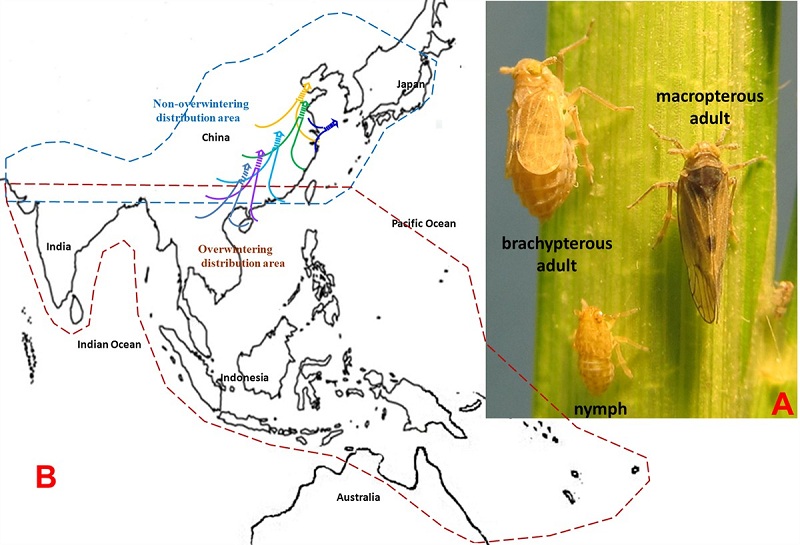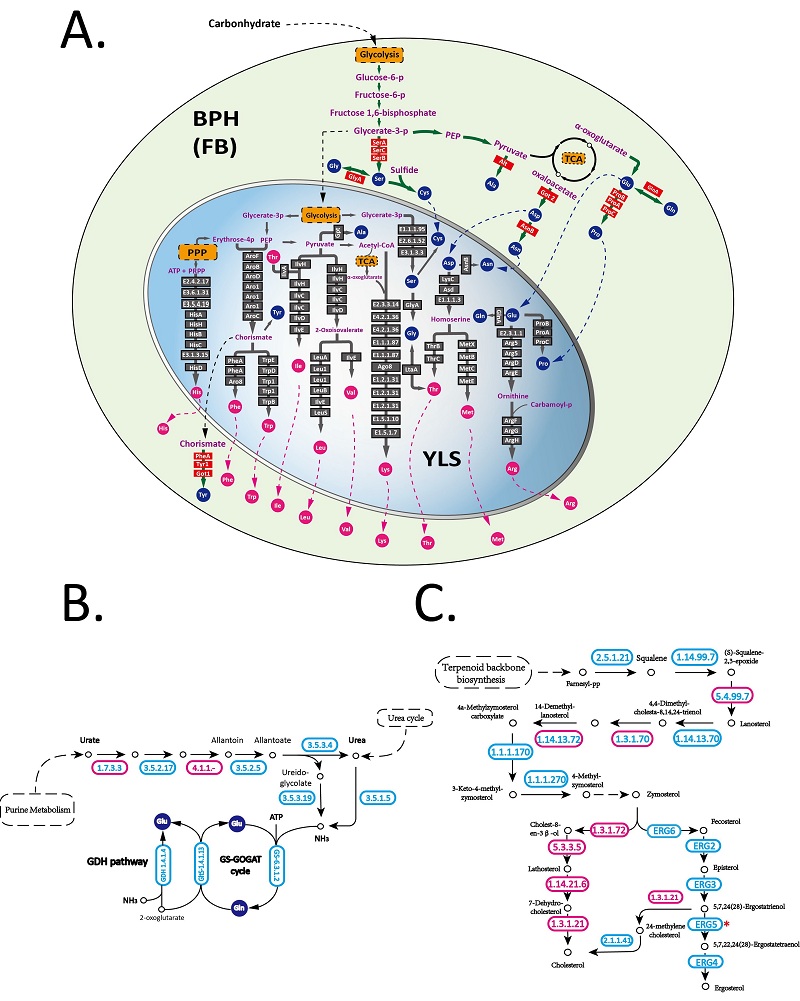A Chinese team consists of scientists from Zhejiang University, BGI and other institutes have finished the genome of brown planthopper, which is a typical monophagous herbivore that feeds exclusively on rice sap. Their study reveals a series of complex adaptations to rice host specialization of the brown planthopper. All these findings highlight potential directions for effective pest control for the planthopper. The research has been published on Genome Biology (Xue et al. Genome Biology 2014, 15: 521).
The brown planthopper (BPH), Nilaparvata lugens, is the most destructive pest for rice, the crop that is the major food source for half of the world’s population.Features of brown planthopper including its mystical capacity to live on a sole host plant and to overcome host plant resistance, association with multiple endosymbionts, high fecundity, long distance migration and so on, contribute to its outbreaks reoccur continually.
In this study, the researchers obtained a 1.14 Gbp genome draft of brown planthopper and created a reference gene set containing 27,571 protein-coding genes. Comparison of the genes of brown planthopper with those of 14 other arthropod species revealed that the brown planthopper is a sister taxon to the true bug, and together form a sister lineage, hemiptera, with the pea aphid. The researchers also found that there was an overall expansion of the gene repertoire in species of the hemipteran lineage.
Chemoreception is essential for herbivorous insects in host plant selection. The researchers analyzed four multi-gene families of chemoreception in brown planthopper involving odorant binding proteins (OBPs), chemosensory proteins (CSPs), odorant receptors (ORs), and gustatory receptors (GRs). OBP and CSP genes, which are signal binding proteins that perceive chemical cues from ambient environments, are represented in all major clades of phylogenetic tree and exhibited conservation among all insects. Moreover, researchers found that polyphagous insects had a richer diversity of OR and GR genes. Thus the lower number of those genes in brown planthopper may reflect its strict monophagous diet of rice phloem sap.
Furthermore, the researchers noticed that genes encoding cytochrome P450 monooxygenases (P450s) and glutathione S-transferases (GSTs) were much fewer in the brown planthopper compared with other insects. Meanwhile, genes encoding the typical alpha-amylase, chitin synthase CHS2 were lost in brown planthopper. All of those mutations were suggested to be associated with the only plant sap diet of the brown planthopper.
The brown planthopper harbored facultative microbial endosymbionts, such as a filamentous ascomycete fungus YLS and bacterial Arsenophonus nilaparvatae. In this study, researchers inferred the genome of brown planthopper and those symbionts to find out their complementary mechanism. The insect host lacked the ability to carry out de novo synthesis of 10 essential amino acids, which could be totally complemented by YLS. Besides, brown planthoppe and YLS were also complementary in the genetic capacity for nitrogen recycling and steroid biosynthesis. While, both the brown planthoppe and YLS were lack of the complete functional gene set for B vitamin synthesis, which could be complemented by the bacterial Arsenophonus nilaparvatae.
Whole genome sequencing of brown planthopper and its fungal and bacterial endosymbionts revealed genomic mechanisms of insect-symbiont interactions. These findings not only help effective pest control of rice in the future, but also provide essential information for further studies of brown planthopper.

